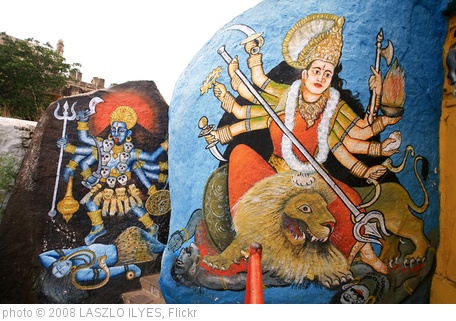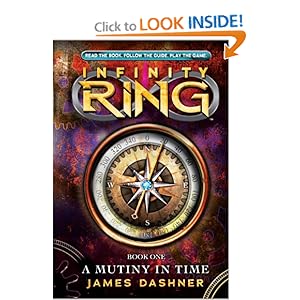Ghosts are always good for a fall evening of reading. My favorite ghost stories: Wuthering Heights by Emily Bronte, Hamlet by Shakespeare, The Saracen Lamp by Ruth M. Arthur (an oldie but goodie for children/YA), The Turn of the Screw by Henry James, The Woman in White by Wilkie Collins, A Christmas Carol by Charles Dickens,
As you can see, old-fashioned ghost stories are my favorites, so these Cybils nominees were just O.K. for me. If you’re a fan of the ghost story genre, you may really enjoy them, though.
 The Whispering House by Rebecca Wade.
The Whispering House by Rebecca Wade.
This ghost story reminded me at first of an Agatha Christie novel or an Alfred Hitchcock TV episode. The tone was very matter of fact and not supernatural at all. I kept thinking throughout the first half of the book that everything would turn out to have a natural, if somewhat sinister, explanation: the dusty, spooky attic, the creepy doll, the deteriorating house, the stories of mysterious death a hundred years in the past. But then a ghostly visitor, a little Victorian girl named Maisie, who may or may not have been murdered by her ugly spinster aunt, starts making appearances, breaking things, leaving messages in strange places, and generally creating poltergeist-like havoc. And our twenty-first century protagonist, Hannah Price, travels or dreams herself into Maisie’s time, chasing the elusive ghostly girl in the white dress with the long dark streaming hair (see cover art, which is very good and evocative, by the way). And after that, things get really ghostly and somewhat ghastly, and there is obviously not going to be any natural explanation for the events in the story.
Still, the sensible, pragmatic actions of the children in the story make the supernatural elements that much more eerie. Hannah and her friend Sam go to visit their friend Miss Murdoch, a Wiccan witch, to get her take on the strange events in the borrowed house that Hannah’s family has rented. Hannah asks her friend the bishop what he thinks about it all. (The bishop and the Wiccan have a friendly but competitive discussion about the differences between magic and miracle, a discussion that I would have liked to read more of.) Hannah takes the doll, which has human hair, to be tested by her friend at the police lab. (Hannah has a lot of useful adult friends.) The kids do normal things to solve this abnormal mystery. I liked that aspect of the story.
 A Greyhound of a Girl by Roddy Doyle
A Greyhound of a Girl by Roddy Doyle
A Greyhound of a Girl is very Irish, and I liked that. But it didn’t really feel like a children’s book, exactly. The story is about four generations of women, and it’s partly told from the youngest girl’s point of view. But it’s also about the girl’s grandmother and great-grandmother (who’s a ghost), and I guess it just left some questions unanswered for me. Why did the great-grandmother feel as if she had to stick around as a ghost? She says it’s to make sure her daughter was O.K. but that took about 60 years of ghost-hood?
The themes are death and dying and living life to its fullest, and the characters have rich and thoughtful conversations about those issues. I think adults would enjoy this book more than children would, but I could be underestimating children and over-estimating adults.
A few ghost quotes:
“You said I killed you – haunt me, then! The murdered do haunt their murderers, I believe. I know that ghosts have wandered on earth. Be with me always – take any form – drive me mad! only do not leave me in this abyss, where I cannot find you!†Wuthering Heights by Emily Bronte.
“In one aspect, yes, I believe in ghosts, but we create them. We haunt ourselves.†~Laurie Halse Anderson, Wintergirls
“[M]ost people have never seen a ghost, and never want or expect to, but almost everyone will admit that sometimes they have a sneaking feeling that they just possibly could meet a ghost if they weren’t careful – if they were to turn a corner too suddenly, perhaps, or open their eyes too soon when they wake up at night, or go into a dark room without hesitating first.â€
~Shirley Jackson, Come Along With Me
What’s your favorite ghost story?
 And the tag line is: Heroes aren’t made. They’re reborn.
And the tag line is: Heroes aren’t made. They’re reborn.











